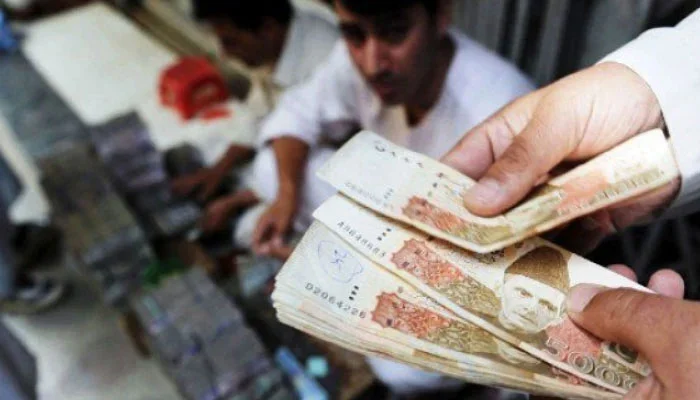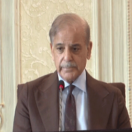By Dr Hafiz A Pasha
Published in The News on June 11, 2023
THE federal budget for 2023-24 has come as a surprise. The impression conveyed in the budget speech is that the economy has already achieved a high level of stability and the coming year can be classified as a return to ‘business as usual’.
However, the current situation is that foreign exchange reserves have been plummeting this year on a monthly basis. The year started with reserves at $9.8bn. By the end of December, they had fallen to $5.6bn and now stand at $3.9bn only, not even enough to provide import cover for one month. On top of this, the IMF program is effectively in a state of suspension and will anyway come to an end on the 30th of June.
Therefore, the economy is now in an even greater exposure to risk. The Annual Plan for 2023-24, prepared by the Planning Commission and approved by the National Economic Council, has projected the external balance of payments position for next year. According to the Plan, the current account deficit is projected at $6bn, as compared to the level of $4bn this year.
This projection is focused on allowing significant growth in imports to enable an adequate supply of imported raw materials, intermediate goods, and machinery to different sectors to facilitate the achievement of the GDP growth rate of 3.5 per cent. The external financing needs in 2023-24 also include the repayment of loans, a net of rollover of $10bn, implying that the required inflow of new financing into the country is $16bn. The large size of this inflow is highlighted by the total new inflow of only $9bn in the first ten months of 2022-23, even when the IMF program was operational.
Therefore, there is a need to recognize that the budgetary projections for 2023-24 are shrouded by a very high level of uncertainty. The finance minister kept saying in the budget speech that there is no risk anymore of default, without substantiating how — with the extremely low foreign exchange reserves of $4bn — the external financing requirement of $16bn will be met next year. Of course, it is possible that his time horizon is only the remaining nine weeks of the incumbent government. Thereafter, the caretaker government and the successor government post-elections can focus on avoiding a default situation.
Therefore, given the risk exposure of the economy even in the next few months, there is a need to assess the degree of realism of the main budgetary projections for 2023-24. The first key magnitude is the level of FBR revenues which are expected to rise by almost 28 per cent in 2023-24. The basic problem here is that 46 per cent of FBR revenues are on imports valued in rupees as the tax base.
As highlighted above, achievement of the high growth rate in import-based revenues will hinge on whether physical measures will continue to be adopted to strongly restrict imports or a market-based exchange rate policy will be adopted which will serve to increase the value of imports in rupees. The latter will facilitate a faster growth in revenue from customs duty and the sales tax on imports.
The second part of federal revenues is non-tax revenues. There are two primary sources of non-tax revenues: SBP profit accruing to the government, and the petroleum levy. The former is projected to be more than double the level this year.
The other major source of non-tax revenues is the petroleum levy. The yield from this source is likely to be almost Rs300bn less than the budgeted amount in 2022-23, because of the fall in demand for petroleum products. As such, the target will be difficult to achieve unless the flat rate of the levy is jacked up from Rs50 to almost Rs75 per litre. This will lead to more cost-push inflation.
Turning to the expenditure side of the budget, the largest component is debt servicing, which is projected to increase by over Rs2tr to Rs7.3tr next year. The IMF has estimated it at Rs8.5tr in 2023-24 in its projections of Pakistan in the latest edition of the World Economic Outlook. The big difference between the IMF and the budgetary projections is probably because the government now proposes to bring down quickly and significantly the policy rate from 21 per cent currently, leading thereby to a fall in the domestic cost of borrowing to the government. This may not be acceptable to the IMF, although there is no evidence that it is contributing to bringing down the rate of inflation.
There has been a generous announcement of a big increase in salaries and pensions, along with an increase in the minimum pay to Rs32,000 per month. The provincial governments are also likely to implement this announcement. Consequently, the total cost is estimated at close to Rs600bn, with the cost at close to Rs175bn for the federal government and almost Rs425bn for the four provincial governments. This is likely to substantially reduce the cash surplus of these governments from the targeted level of Rs 650 billion.
There are also two gaps in the federal budget for 2023-24. The first relates to the level of interventions for poverty alleviation. The well-targeted Benazir Income Support Program is being allocated only an additional Rs50bn, making the size of the programme in 2023-24 come to Rs450bn.
Given the increase in poverty incidence to above 40 per cent, following the rise in unemployment and the big escalation in basic food prices, the ‘poverty gap’ in the country is estimated at Rs2450bn. Therefore, BISP’s size should have been increased to at least one- fourth of the poverty gap. This would have enabled expansion in the number of beneficiaries and a larger per capita cash transfer. Ideally, there should have been greater resort to progressive taxation to finance the increase in allocation of funds to the BISP.
Finally, there is the other gap that no major steps have been proposed to ‘downsize’ the federal government. This should have included steps for elimination of functions over-lapping with the provincial governments. Also, it is time to bring down the subsidy of Rs1500bn being given to the state-owned enterprises (SOEs) by either closure or privatization of loss-making entities and reduction in system losses in the power sector.
Overall, the federal budget of 2023-24 has been framed on the assumption of ‘business as usual’. This is not the case with Pakistan moving closer to default, especially with the extremely low level of foreign exchange reserves and absence of the IMF umbrella. There are also serious estimation problems with many key budgetary magnitudes, leading thereby to the likelihood of a significantly larger budget deficit than claimed in the budget speech.




